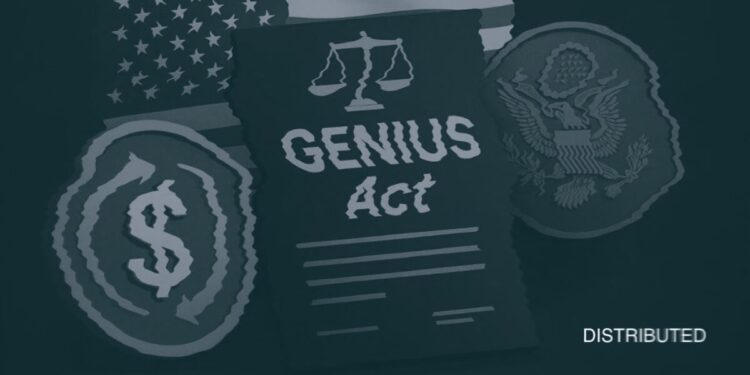- The law imposes minimum requirements on stablecoin issuers, including compliance with anti-money laundering laws.
- It also gives a legal structure to dollar-pegged stablecoins.
President Donald Trump on Friday signed the GENIUS Act into law, establishing the United States’ first dedicated regulatory framework for dollar-backed stablecoins.
The move, welcomed by crypto supporters and met with caution by consumer advocates, signals a major policy shift aimed at bringing digital assets into the mainstream financial system.
The legislation, officially named the Guiding and Establishing National Innovation for U.S. Stablecoins Act, introduces federal rules for privately issued stablecoins pegged to the U.S. dollar. The law sets minimum requirements for issuers, including compliance with anti-money laundering regulations and mandatory reporting of suspicious financial activity.
Until now, stablecoin issuers operated in a legal grey zone. The GENIUS Act seeks to change that by drawing clear lines for lawful issuance, use, and oversight of these digital tokens. However, not everyone is convinced. Critics say the protections offered by the law fall short, NBC News reported.
See Related: ‘Stablecoin Transparency Act’ Could Require Stablecoins To Be Backed By Dollars
A Push Toward The Mainstream
The GENIUS Act was part of a broader package of three crypto-related bills backed by Trump that advanced through Capitol Hill this week. The stablecoin bill received final House approval before landing on the President’s desk Friday afternoon.
In a speech before the signing, Trump emphasized his administration’s broader crypto agenda. He mentioned reshuffling leadership at the Securities and Exchange Commission, reiterated his opposition to a Federal Reserve-backed digital dollar. Although the new regulations won’t take effect overnight, analysts say they mark a significant milestone in the evolution of the U.S. crypto market.
The GENIUS Act does not immediately open stablecoins to everyday consumer use. Most companies are expected to adopt them for backend financial processes — for example, lowering credit card fees or improving efficiency in cross-border transactions.
Still, by recognizing and regulating stablecoins, the U.S. has taken a critical step in integrating digital assets into the traditional financial system. Whether the long-term impact will be innovation, disruption, or instability remains a matter of debate, but the policy direction is now clear.



